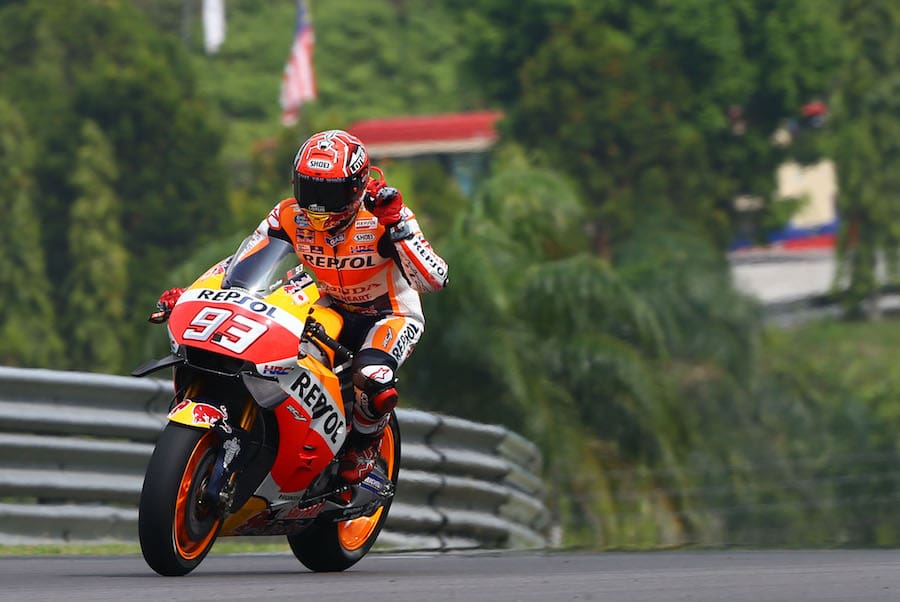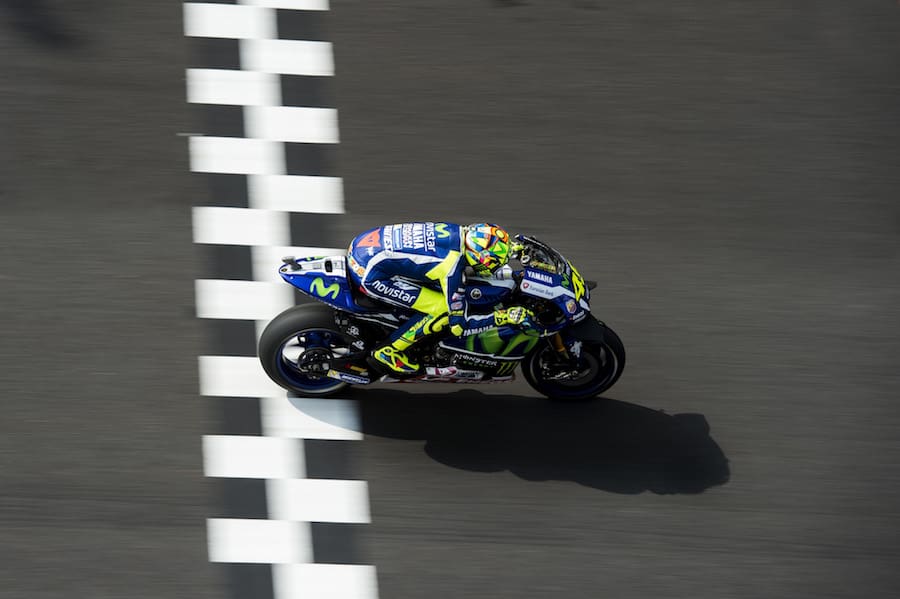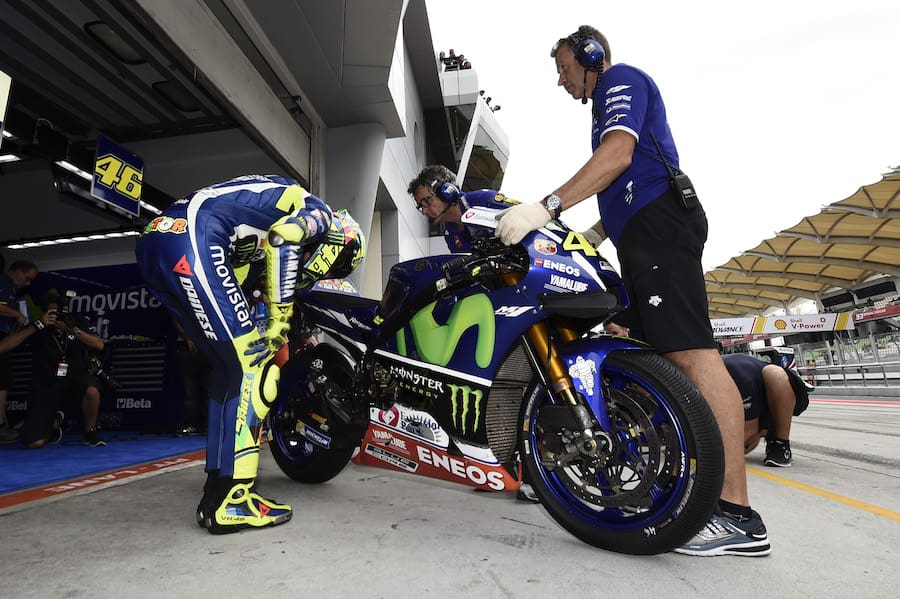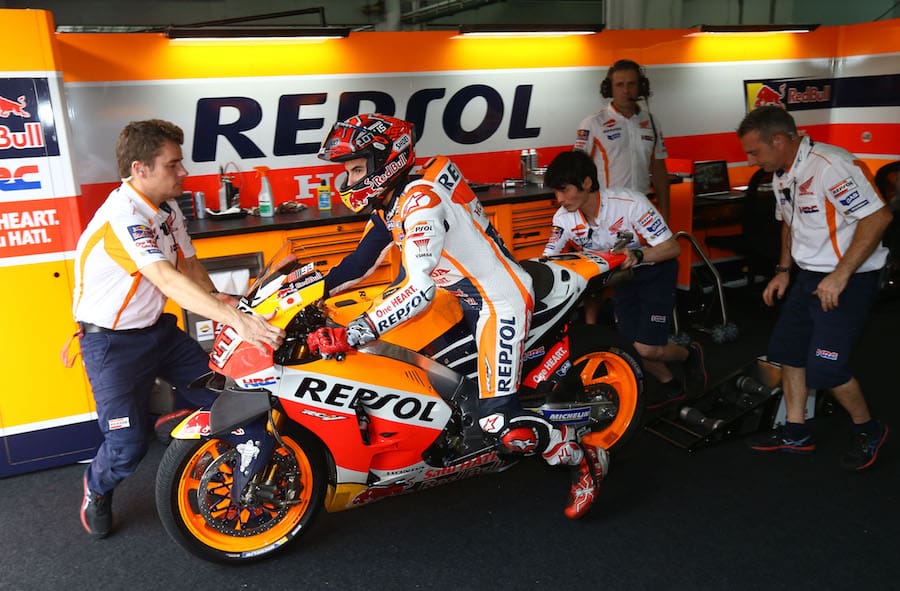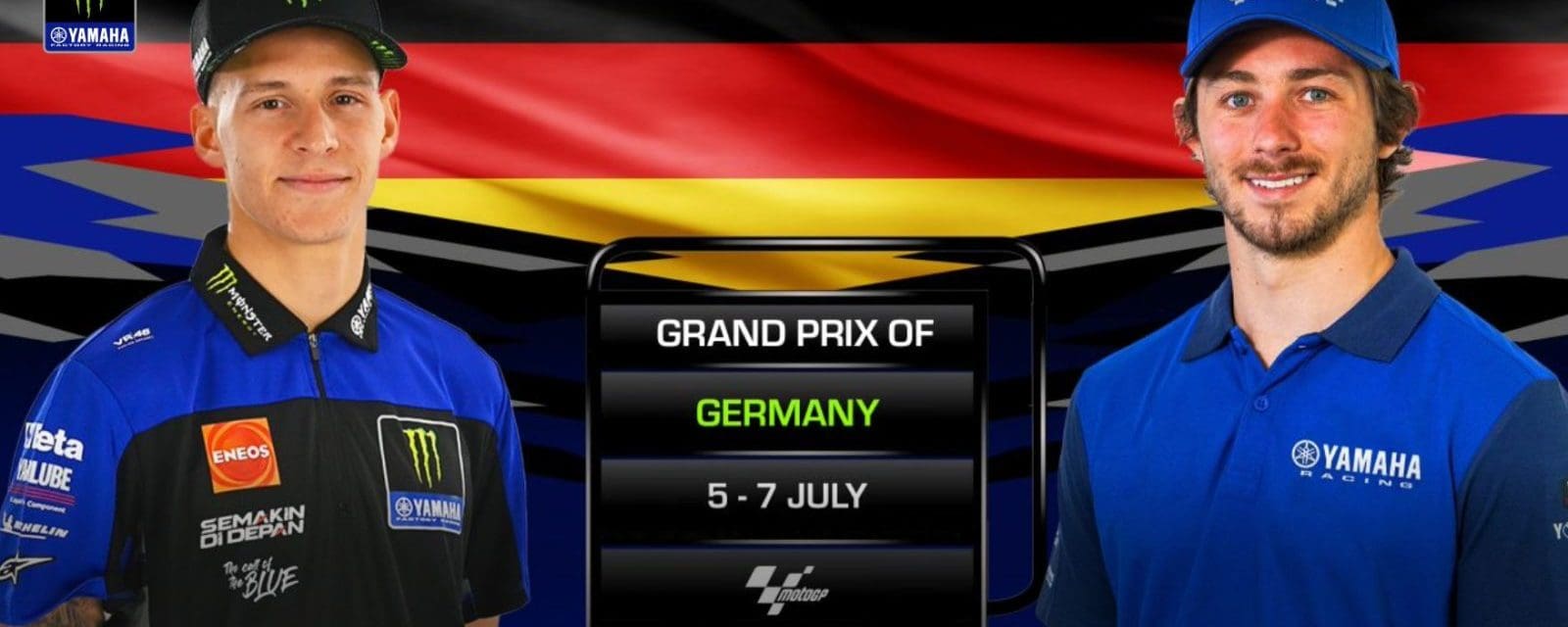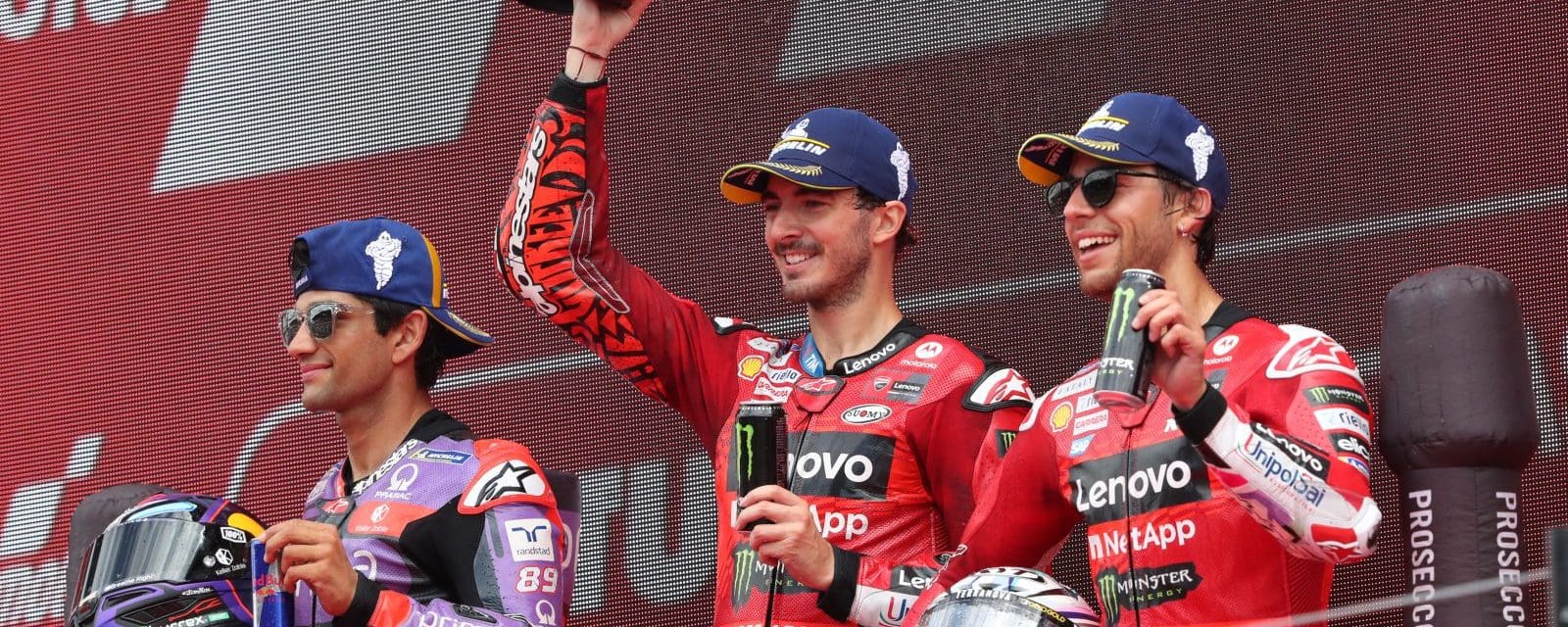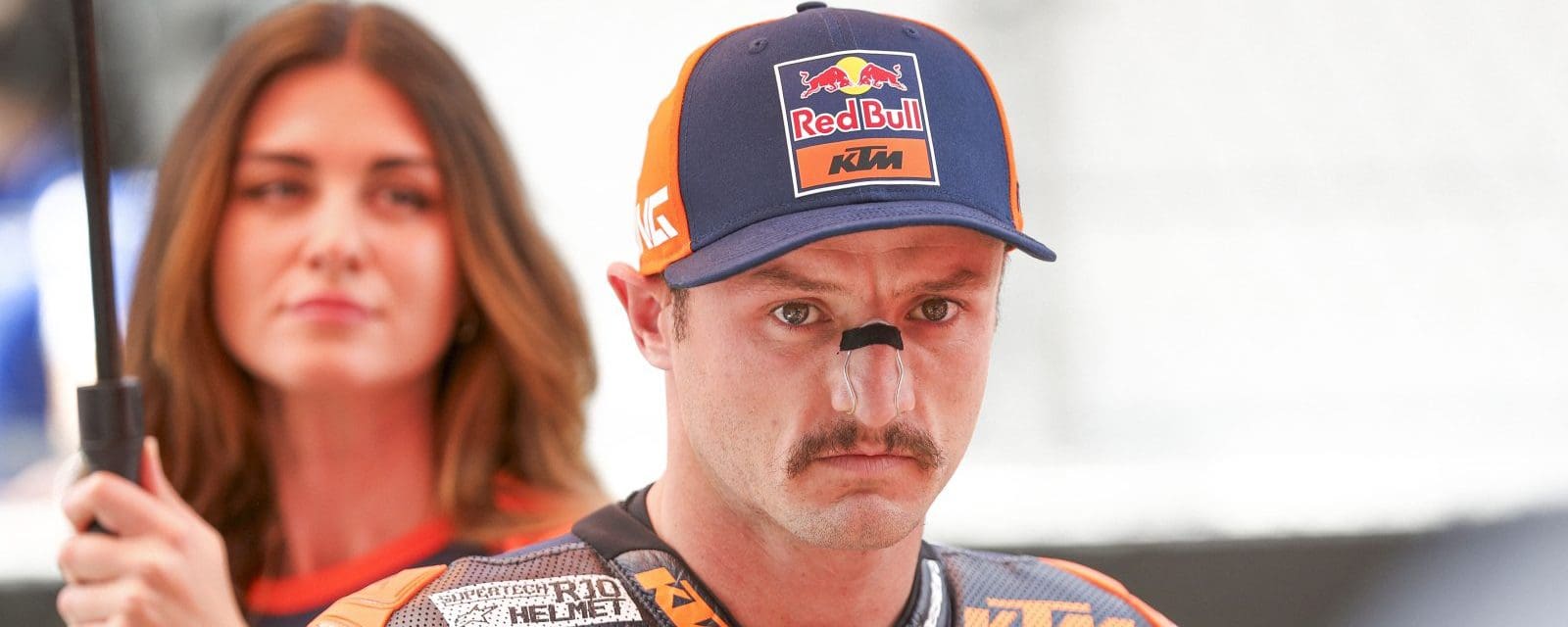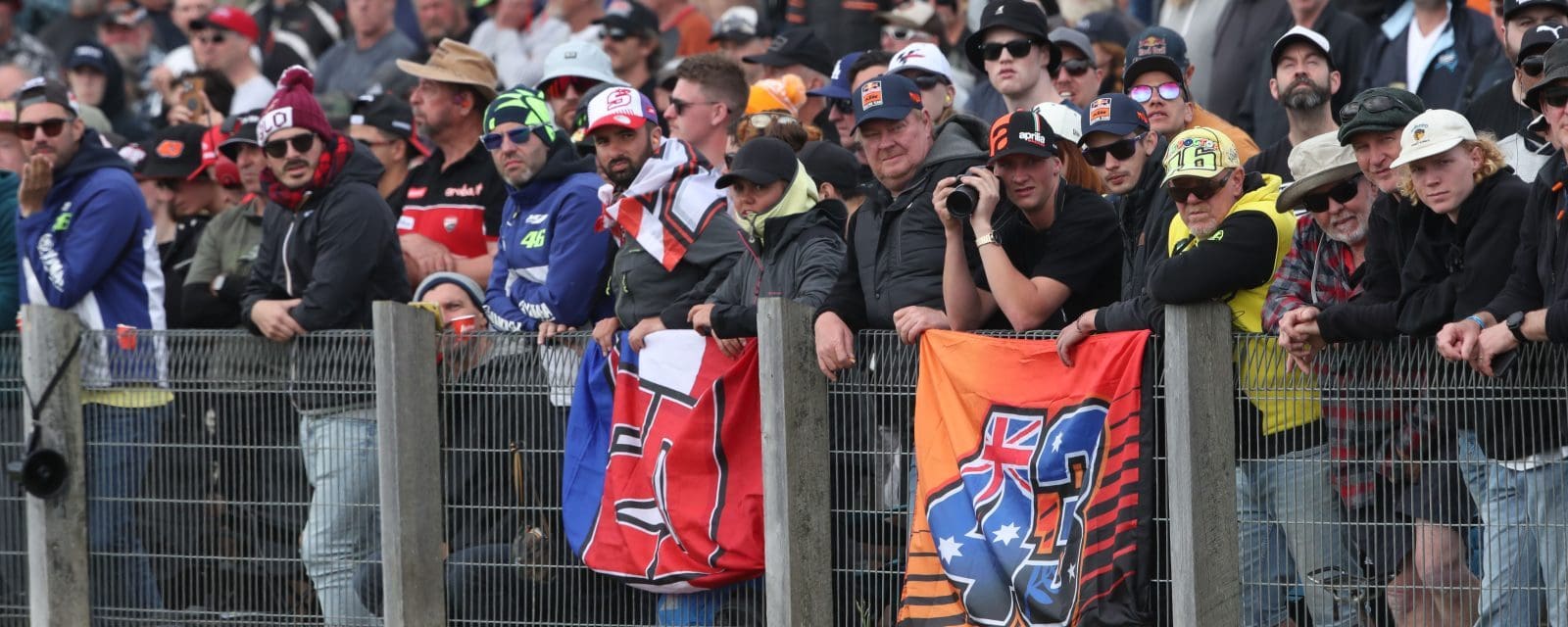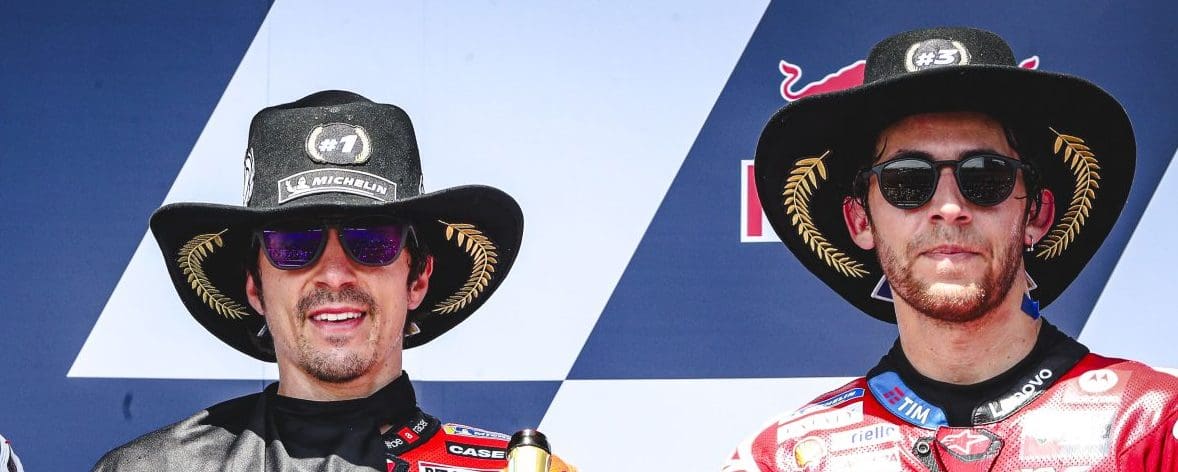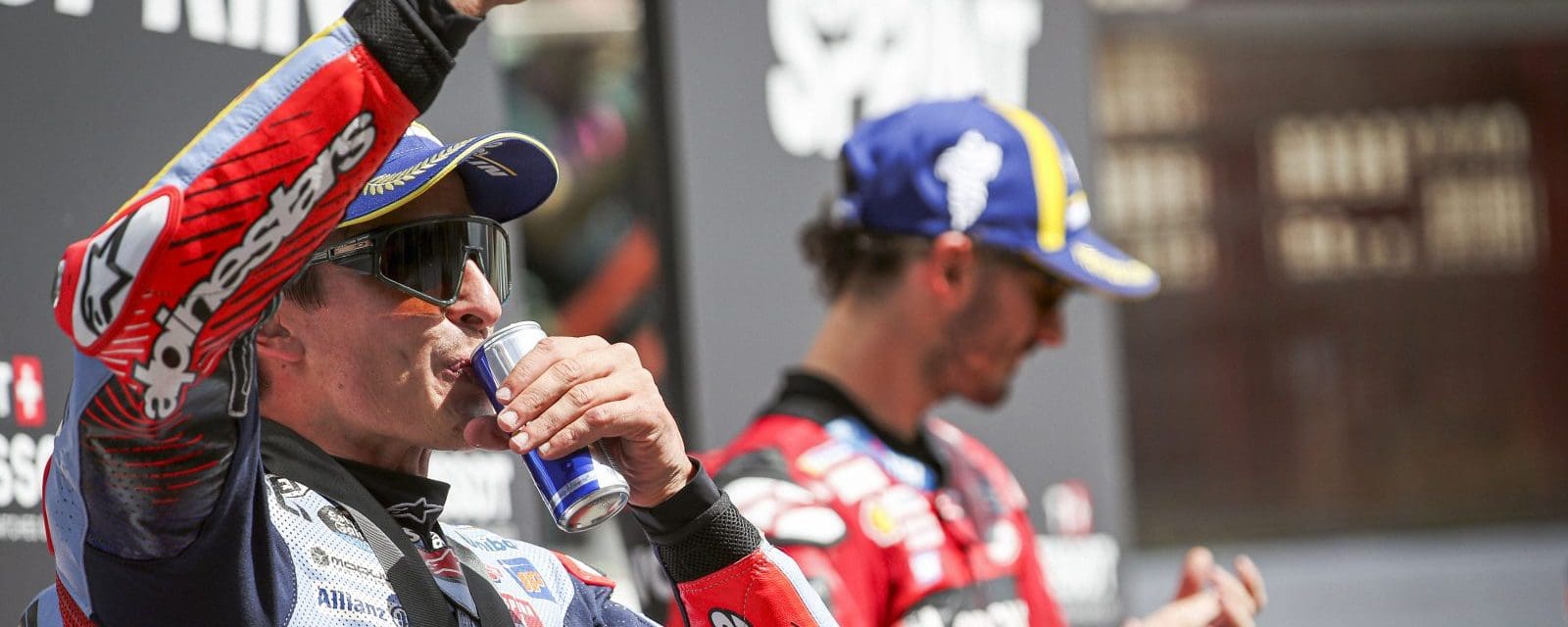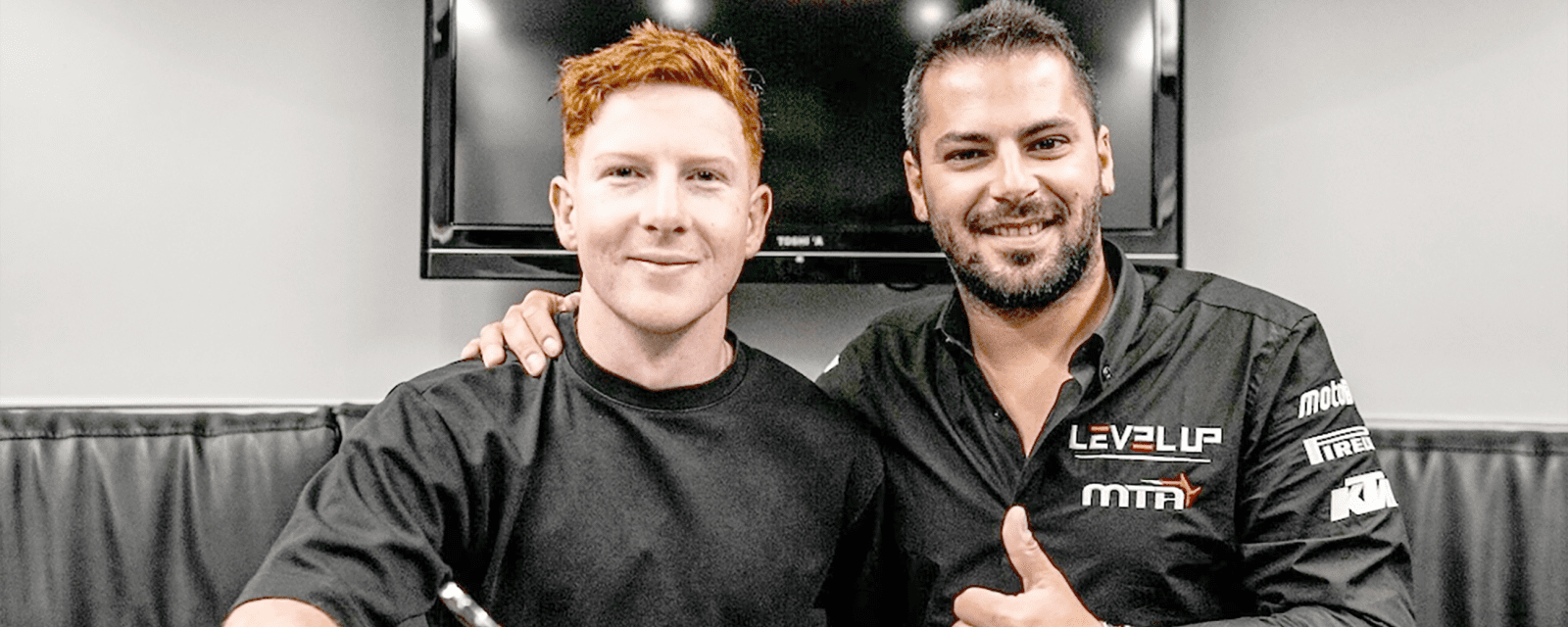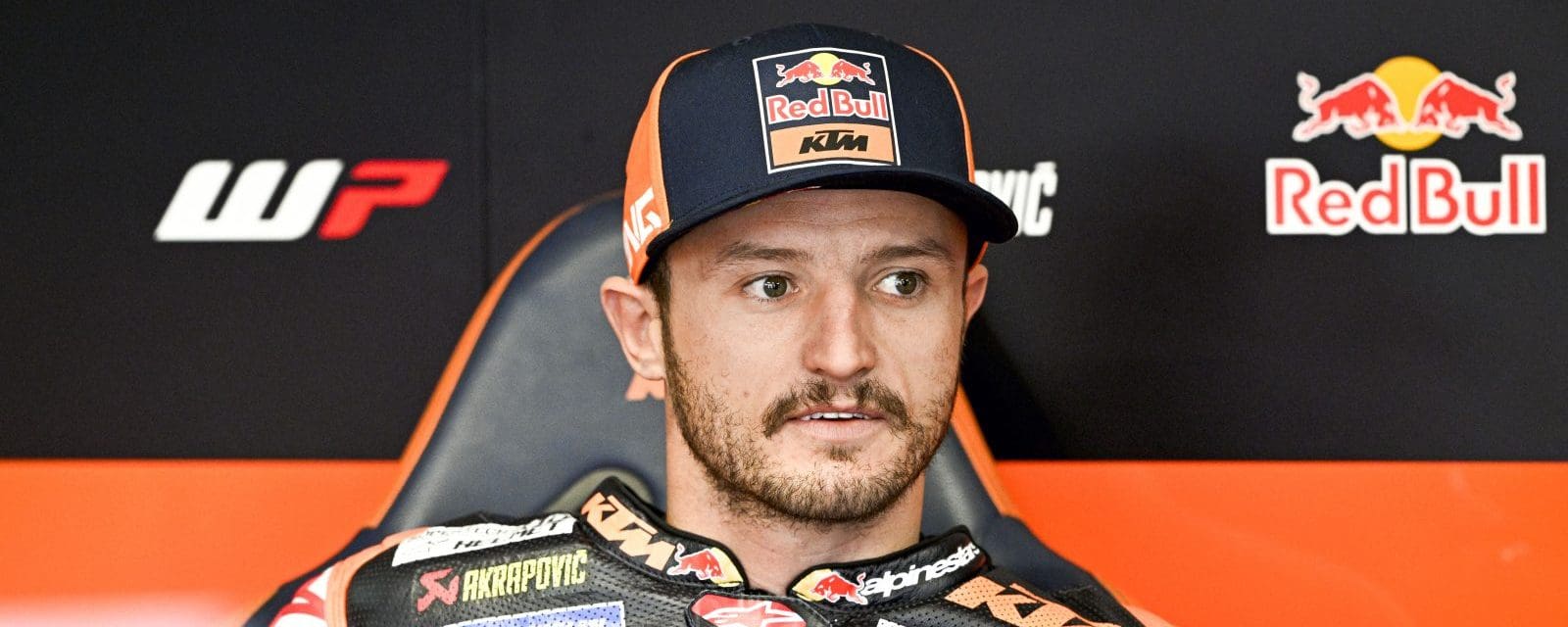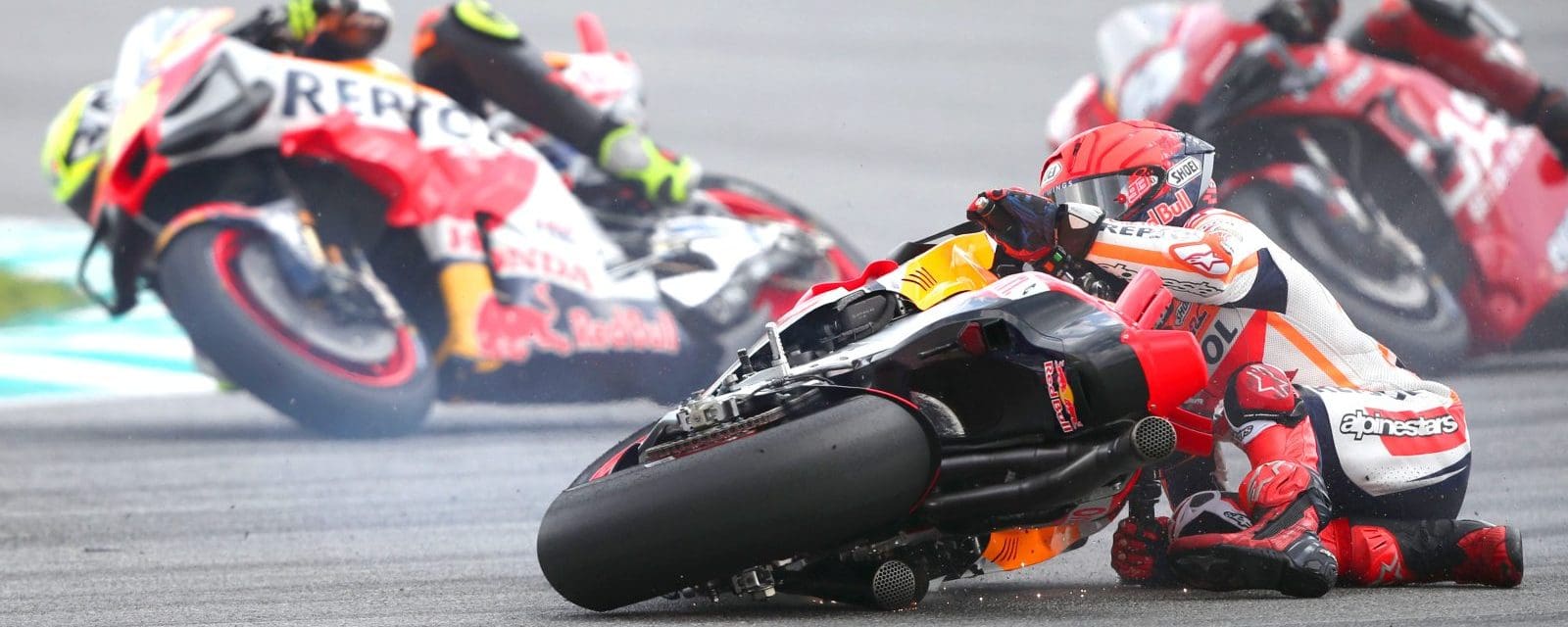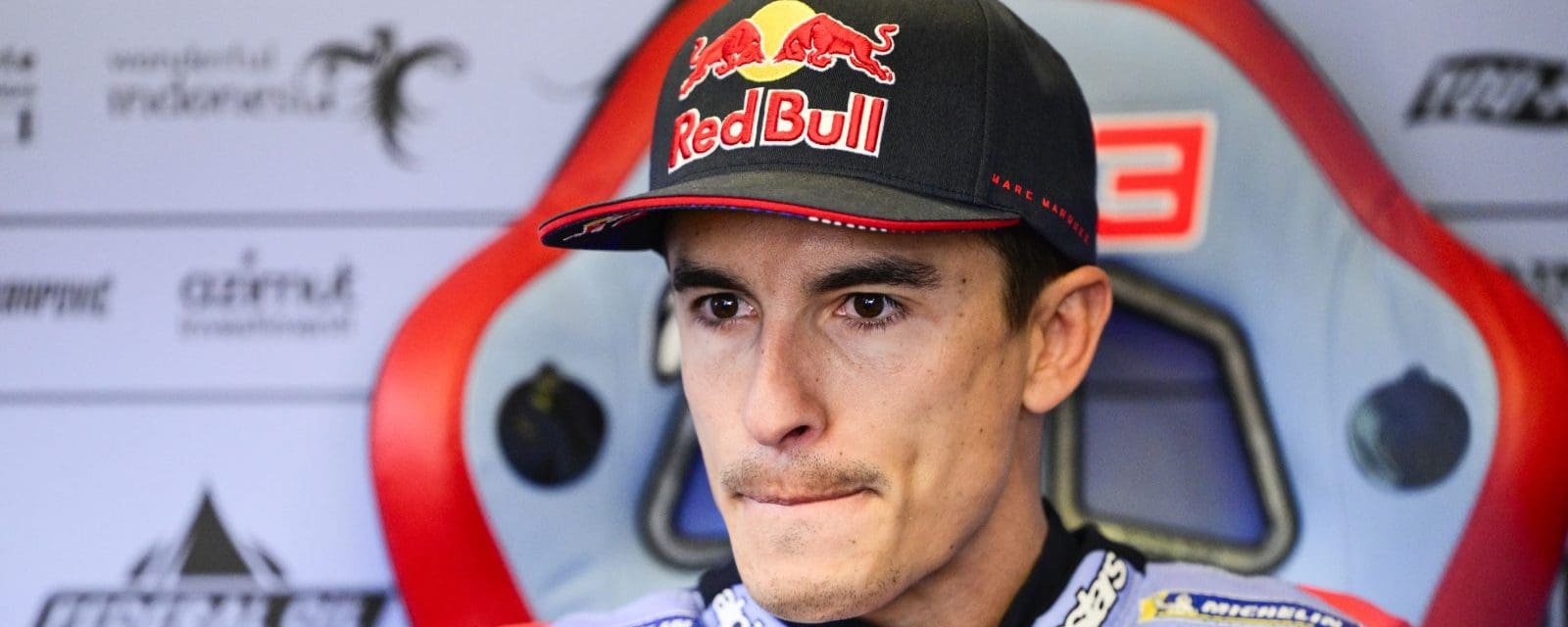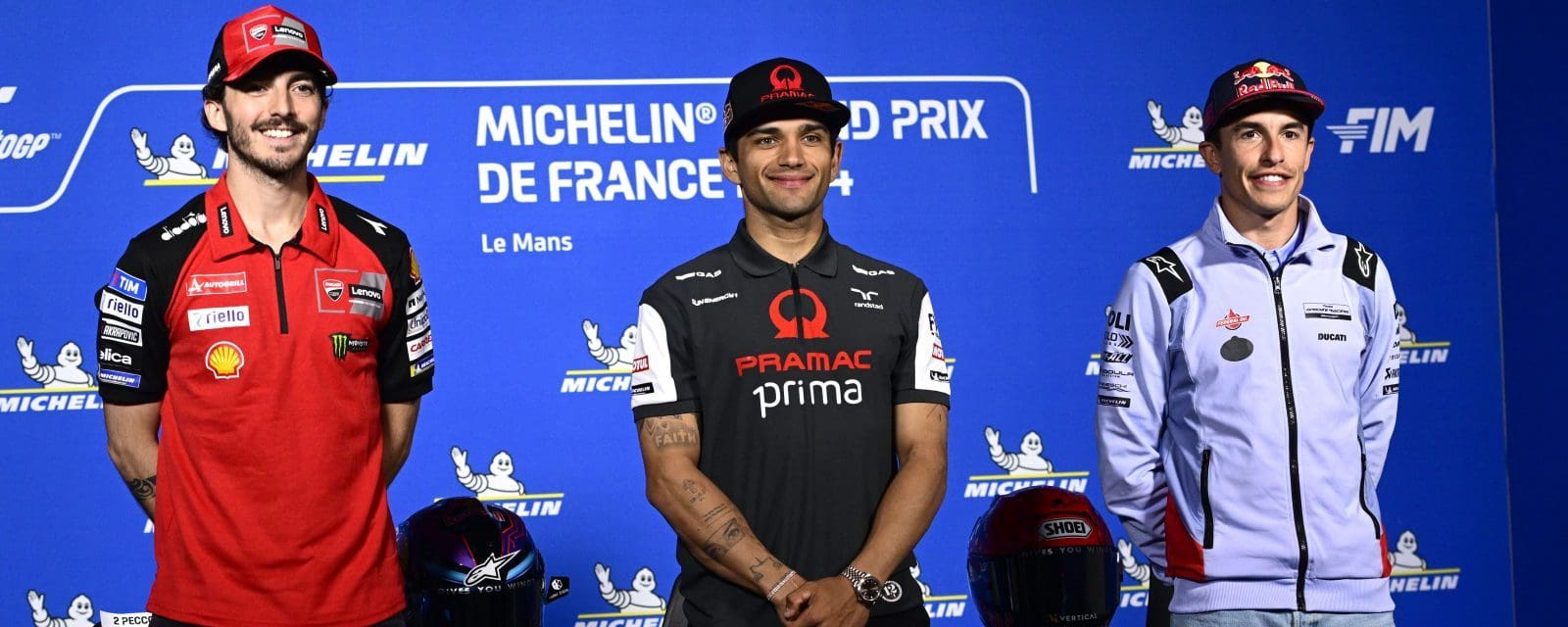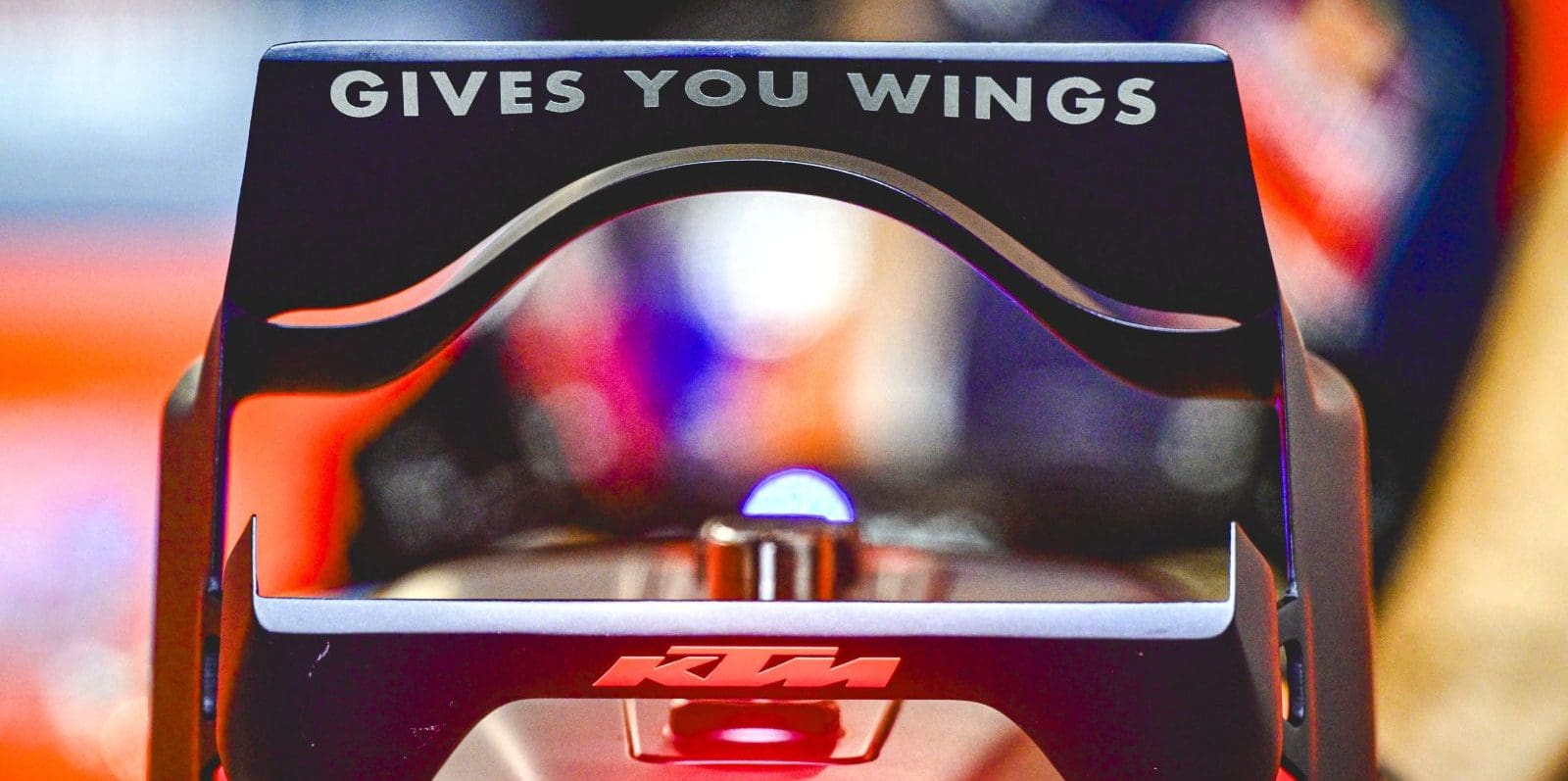For a second successive race, bad weather played the major role in practice and qualifying – but the tropical downpours were more predictable than Phillip Island’s sudden squalls, and riders were more ready for it.
A monsoon-style cloudburst brought out the red flags in Moto3 qualifying, disrupting timing for the rest of Saturday’s sessions – but the reworking of the circuit had improved drainage, and the standing water dissipated in time for a full session to be restarted.
For MotoGP, dry mornings were followed by damp afternoons, although only more or less, because it wasn’t necessarily raining to be wet. The new surface (praised for terrific levels of grip both wet and dry) proved very slow to dry completely in the humid conditions. Furthermore, in a comment by Dovizioso echoed by many others, “the asphalt is dark and very difficult to see if it is wet or dry”.
It remained damp enough for all to use wet tyres in both Q1 and Q2, and for many riders to abandon the usual two-exit strategy, because the wets took time to get to optimum temperature.
One who stopped was Andrea Dovizioso, who set fastest time on a soft rear then pitted for a harder rear to go faster still, for his second pole of the season on the factory Ducati. “I pitted too late – I didn’t use the short-cut,” he said. “I only got two laps on the second tyre, and I could have gone faster.”
Rossi stayed out and got quicker at the end, to slot into second, knocking Movistar Yamaha team-mate Jorge Lorenzo to third by five hundredths. After qualifying 15th in Australia, he was happy to report “that I feel very comfortable in wet or dry, because we made an improvement for FP4.”
Lorenzo was likewise happy with the front row, and eager to refute suggestions that he was a bad wet-weather rider. “I have had many good results in the rain, but this year it has been difficult for me to get confidence in the front [Michelin] tyre. But this track has good grip, it is smooth and it is warm, and our bike works very well here.”
Marquez had been fastest in FP1 and dodged wet FP2 to recuperate from a dose of stomach trouble – gastro-enteritis. “I feel a bit better today,” he said, after heading wet FP4 and placing a close fourth to head row two.
Alongside him, Australian GP winner Cal Crutchlow, after a heroic day (his 31st birthday). A crash in FP3 ruled him out of the top ten and left him with painful left hand injuries; but he made it through into Q2 only to crash again while placed last. Picking up his battered LCR Honda, the handlebar bent and “the brake lever pointing to the ground”, he forced through to fifth in the dying moments, pushing returned injury victim Andrea Iannone (Ducati) to sixth. “It was a little dangerous, but I couldn’t start from 12th,” he said.
Maverick Vinales (Ecstar Suzuki) had led dry FP3, but never got going in the wet, qualifying eighth, between team-mate Aleix Espargaro and Alvaro Bautista on the much-improved Aprilia.
Moto2 qualifying was also wet but drying towards the end, with a couple of riders fitting rear slicks. But title leader Johann Zarco stayed on well-worn wets to accomplish an astonishing tour-de-force, going one second faster to secure pole, and then running faster again, to stretch his advantage to better than two seconds.
It was a comforting show of superiority, and a race win would be enough to secure the Ajo Kalex rider’s second straight Moto2 World Championship, the first rider to do so.
“It’s important. If I can get a good start into the lead, I can run my own pace and control the race,” he said.
His spree denied long-time leader Franco Morbidelli (EG-VDS Kalex) a first pole; while a late risk by Axel Pons (AGR Kalex) on a rear slick put him on the front row, at the expense of Dynavolt Kalex rider Jonas Folger.
Zarco’s title rivals were left to cling to fading hope; Thomas Luthi (Garage Plus Kalex) fifth, in the middle of row two; but Alex Rins a distant 23rd, 5.7 slower than pole.
Moto3 qualifying was interrupted by a cloudburst, but a drying track at the end of the restart saw major shuffling at the top of the time-sheet.
At the last gasp, champion Brad Binder (Red Bull Kalex) snatched pole, his sixth of the season, from late-comer Jorge Navarro (EG-Honda); who had in turn denied an on-form Pecco Bagnaia at a track that clearly favoured his Mahindra.
A full resurface and a quirky adverse-camber reprofiling of the final hairpin brought a few surprises to riders after a 3-million Euro refit at Sepang.
The change to the final hairpin introduced a fairly severe adverse camber to the apex of the U-turn, with the track level raised by a full metre on the inside of the bend, especially just after the true apex, at what used to be the clipping point.
The intention of track redesigners Dromo was two-fold – to reduce exit speed and thus speed of arrival at Turn 1 at the other end of the pit straight, where there is limited run-off area; and to make a corner where different lines could be used, to encourage overtaking.
This may have suited F1, but it left MotoGP riders a little bemused.
“I don’t think it will change so much the speed at the next corner,” said Lorenzo; while the more difficult exit would be dangerous, but for the excellent grip of the full resurface. “It’s lucky the grip is so good, or there would be a lot of accidents there,” he opined.
Pole qualifier Dovizioso thought in terms of overtaking it was actually worse than before, at a spot where many races have been decided on the final lap. “Now you can’t enter the corner with a lot of pressure on the brakes.”
Rossi in general approved of safety modifications, but agreed overtaking would now be slightly more difficult. “In the dry there is not much difference, but when it is wet you get a lot more spinning.”
The adverse camber at the clipping point did give rise to a variety of lines, with some (notably Marquez) hugging the inside on the way in and allowing the bike to drift wide as the track fell away; Rossi and others staying wide to complete as much turning as possible, then taking a late clipping point beyond the worst of the camber change.
The higher technology of modern MotoGP bikes has taken the emphasis away from the rider and given more to the bike, and to the technicians preparing it.
This is the opinion of Valentino Rossi, famous for saying in 2003 that the equation was 80 percent rider and 20 percent motorcycle … and departing from dominant Honda to join underdogs Yamaha in order to prove that it was the rider and not the engineers that made the difference.
“Now I think it is more 50:50,” he replied, in response to a question from an Indonesian journalist.
“In the last years, it has changed,” he said. “Now the motorcycle is very important, and also the team, to adapt the bike to suit the rider. The equation is about half and half, bike and rider.”
Asked the same question, Moto3 champion Brad Binder thought the opposite was true in the smallest class. “There’s not much you can do with our bikes. Get on, get it set up, and just ride it.
“It’s more about being in the right place at the right time. If you get a couple of slipstreams, you can be one second faster.”
Dani Pedrosa was obliged to resort to Twitter to squash persistent rumours that he had decided to retire, after yet another injury at the Japanese GP.
The rumours, he said, were “groundless. I can’t wait to be back.”
Officially, he hopes to be fit for the final round in Valencia in a fortnight.
Andrea Iannone also confounded rumours that he would be staying away for the rest of the season, by turning up at Sepang for his last two races with Ducati before moving to Suzuki next year.
After saying the hardest part of his recovery after his injury at Misano was watching the three races he missed from home, he was directly in full action, qualifying on the second row.
“I expected to struggle a lot more – not really physically but in general in getting up to speed, but already in the first practice session I had an excellent feeling with my bike, and was feeling good,” he said.
Three factory teams were sanction, and two of them fined, at Sepang, in a display of authority by the FIM panel of stewards.
Repsol Honda got away with an “Official Warning”, after failing to notify Dorna or IRTA that Marquez would not be available to attend the compulsory Autograph Session on Saturday morning. He pleaded illness, after missing yesterday afternoon practice, suffering from a stomach bug.
Team Suzuki Ecstar were hit with a 500-Euro fine because Aleix Espargaro did not attend the same session.
And Ducati got away with just 250 Euros, because their riders Dovizioso and Iannone arrived 15 minutes late.
Three factory teams were sanction, and two of them fined, at Sepang, in a display of authority by the FIM panel of stewards.
Repsol Honda got away with an “Official Warning”, after failing to notify Dorna or IRTA that Marquez would not be available to attend the compulsory Autograph Session on Saturday morning. He pleaded illness, after missing yesterday afternoon practice, suffering from a stomach bug.
Team Suzuki Ecstar were hit with a 500-Euro fine because Aleix Espargaro did not attend the same session.
And Ducati got away with just 250 Euros, because their riders Dovizioso and Iannone arrived 15 minutes late.
By Michael Scott
